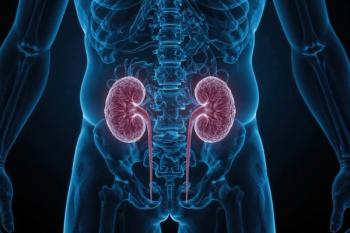
Histamine Determined Using Fluorescence Detection System
In a new study, scientists have created a fluorescence chemo sensor to selectively determine histamine in human plasma samples.
Scientists from King Khalid University in Abha, Saudi Arabia and Al-Azhar University in Cairo, Egypt have created a fluorescence chemo sensor to selectively determine histamine in human plasma samples. Their work was published in Spectrochimica Acta Part A: Molecular and Biomolecular Spectroscopy (1).
Histamine can impact different physiological functions, such as acid secretion, neurotransmission, and immune responses, through H1, H2, H3, and H4 receptors. Histamine imbalances are linked to different pathological illnesses, such as autoimmune and inflammatory diseases. They can affect different processes, such as releasing stomach acid (H2 receptors), releasing neurotransmitters in the nervous system (H3 receptors), and affecting the contraction of smooth muscle (H1) receptors. These receptors are vital to understanding diseases, so monitoring and maintaining physiological balance in histamine production is essential.
In this study, scientists created a novel fluorescence chemo sensor to measure histamine in different forms. This detection method consists of detecting specific molecules or ions, generating a measurable signal in response. It is based on the phenomena of chemo sensors undergoing transformations upon interacting with the target compound.
Histamine quantification, when conducted in a plasma matrix, can be used to examine mass cell activation and differentiate between allergic reactions. The scientists created a fluorescent-based sensor for determine histamine in the human plasma matrix. The method was based on chemical transformation, turning histamine into N-(2-(1H-imidazol-4-yl) ethyl)-2-bromoacetamide, which is a fluorescent product that differs from normal histamine molecules.
The transformation itself involved chemical reactions between trimethylamine, with the final product becoming excited at 250 nm and emitting a signal at 340 nm. Using histamine determination, the scientists obtained significant concentration-dependent fluorescence enhancement. After the measurements, the procedures were examined with ICH M10 recommendations, to check the system’s accuracy, precision, selectivity, and robustness. Overall, the method showed a limit of quantification of 0.25 ng/mL and dynamic detection throughout a linearity range of 1–200 ng/mL, which allowed for accurate histamine assessment in the plasma matrix.
Reference
(1) Alqahtani, A.; Alqahtani, T.; Abdelazim, A. H. Development of Fluorescence Chemo Sensor for Selective Histamine Determination in Spiked Human Plasma Samples. Spectrochim. Acta Part A Mol. Biomol. Spectrosc. 2024, 308, 123711. DOI:
Newsletter
Get essential updates on the latest spectroscopy technologies, regulatory standards, and best practices—subscribe today to Spectroscopy.





